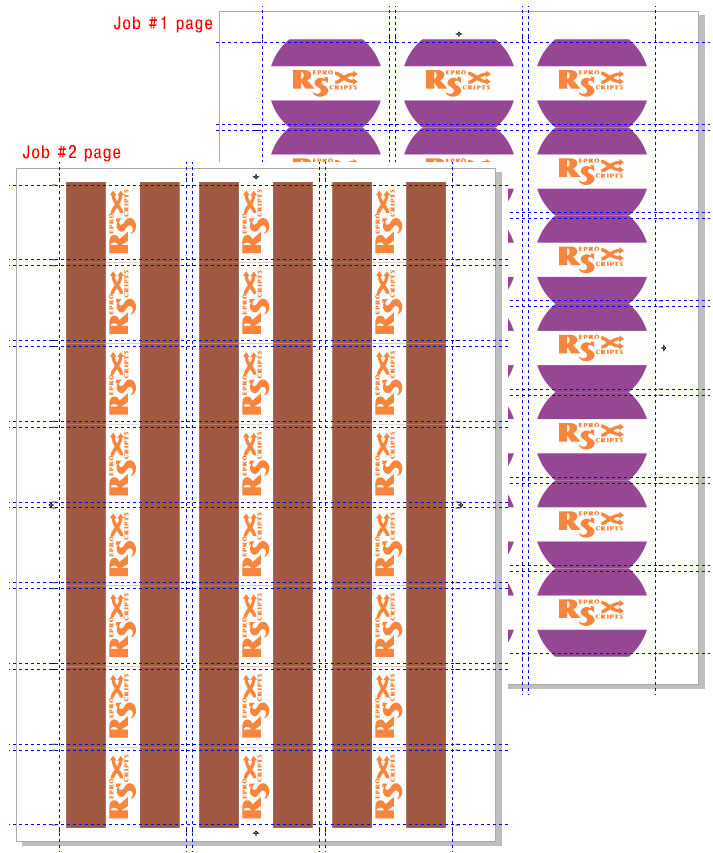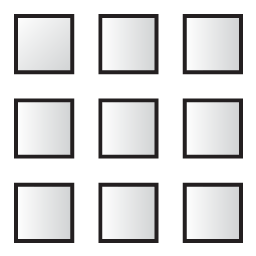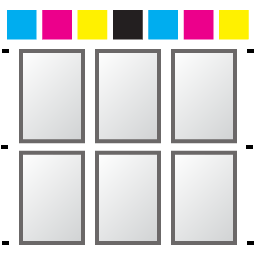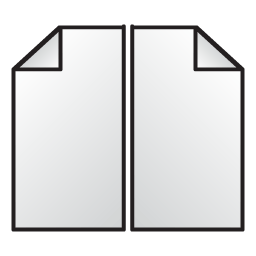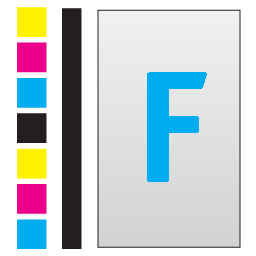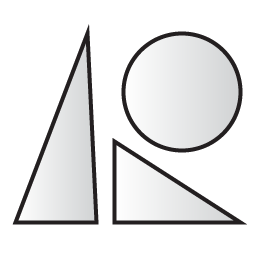ReproScripts Imposition Fast layout plugin for CorelDraw
- instant layout onto sheets of various sizes
- automatic location of jobs by the size
- fast add selected shape
- customizable printing marks, bleed

Often there is no need to make complex impositions, but it is only necessary to quickly distribute on the sheet one job before sending to the press. The Fast layout plugin is designed just for that. It imposes jobs on sheets of different sizes in couple of clicks. It is particularly useful for quickly sending jobs to digital printing, but in many other cases it can greatly simplify the work of a designer or prepress specialist.
List of jobs for the layout
The plugin requires an open document in which to search for jobs that need to be imposed. When you run the plugin, it scans the document and fills the list of jobs. The plugin looks for rectanglar shapes in the document which designate the borders of jobs. A border is a rectangle at an arbitrary location in the document that restricts the design. The rectangle itself will not be present in the resulting layout, only all objects that are completely or partially within its boundaries will be taked.
Layout building options
On the right hand side of the plugin window there are a number of elements that allow you to manage the resulting layout.
Target sheet size
The size of the output sheet used for the imposition is an important parameter. The list is filled in with values from the plugin's settings. Each entry from the jobs list will be imposed into a separate sheet of the specified size.
The plugin searches for borders against the list of standard predefined sizes or objects that are explicitly marked for this function. In the header of the list, you can choose which borders — by size or marked by the designer — to be included in it.
Working with the jobs list
All the jobs in the list participate in the layout — each will be imposed on a separate sheet. Clicking on the button , you can find the border object in the document.
Depending on how the border was added to the list, it will be marked with a colored dot — blue for job borders found by size, purple for borders marked by the designer, and ortange for manually added.
In addition, one or more document pages can be added to the quick layout list, along the boundaries of which the trim dimensions will be calculated and bleed and trim marks will be added accordingly.
If the border is defined incorrectly or there is simply no need to post this work, you can make it inactive by clicking on the switch in the line. The color of the point will change to gray , and the item will become inactive and will not be taken into account in the layout.
You can limit the type of objects displayed in the list — to do this, click the filter button and mark the options that you want to see.
To rescan the document, you can click the button in the list header. For example, if the plugin could not determine the required border by size, then, when without closing the plugin window, you can mark it in the document and rescan.

Search of jobs by size
If the menu item found by size is ticked off, then the jobs that are bounded by a rectangle of a standard, pre-defined size go into the list.
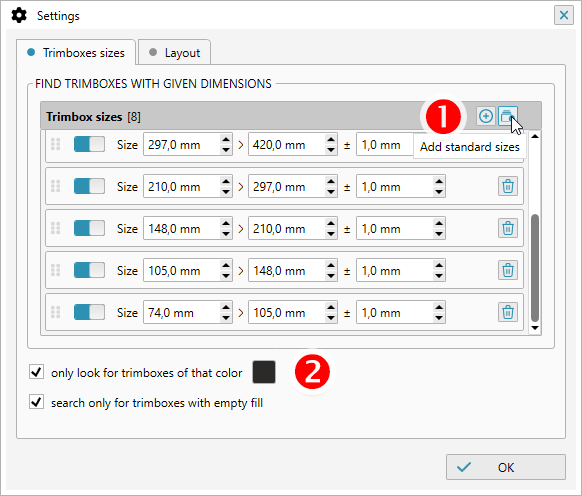
The sizes by which the search is made are specified in the plugin settings 1, which can be opened by clicking on the button with the gear in the lower right corner of the form.
Clicking the button can add the size and its allowance, which the plugin will take into account as suitable when searching for borders. You can also add standard sizes A, B, SRA and others. In addition, in the settings, you can specify that only rectangles with a outline of the specified color ( search only for borders of that color) and/or only with empty fill ( search only for borders with empty fill) are taken into account 2. This will help avoid erroneous inclusion of unsuitable objects in the list of boundaries.
Search for jobs borders marked by the designer

During the installation of the ReproScripts Imposition library an additional control is added into the CorelDraw interface. It allows to mark a rectangular shape as a trim border for the design within. The control ties additional information with the border shape which can be picked up by the Fast layout plugin. All object within the border bounds will be considered a separate job and be added to the list and processed. Any rectangle on any page can be marked as a design border and the plugin will add it to the layout list when scanning, if the menu item marked by the designer is checked in the header.
The control for marking borders is built into the standard toolbar of CorelDraw. Therefore, to use it, the standard panel must be enabled in the interface and be positioned horizontally. The element has an orange background, allowing you to quickly understand which object can be marked as a border.
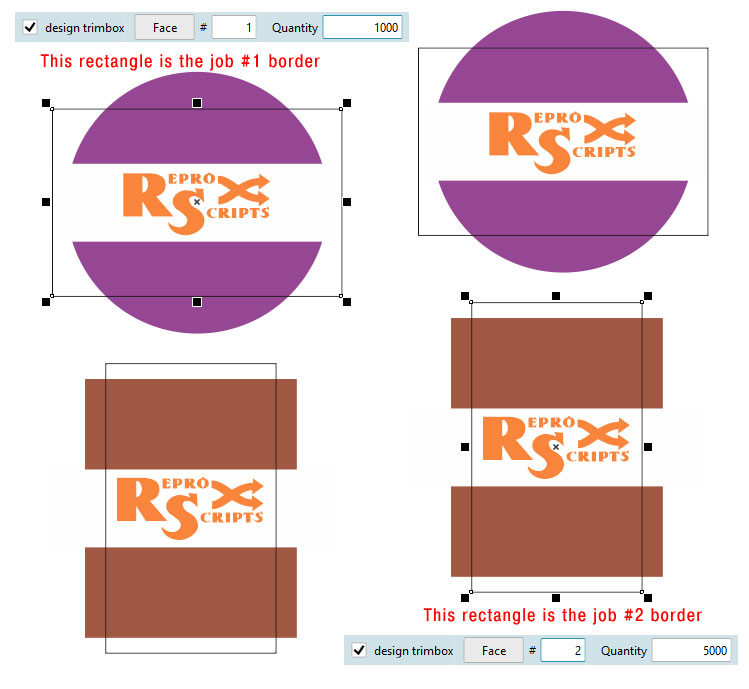
Adding the selected object to the list manually
The easiest and fastest way to add an object to the pickup list is to manually add it. Just select the desired object in the document and click the button.
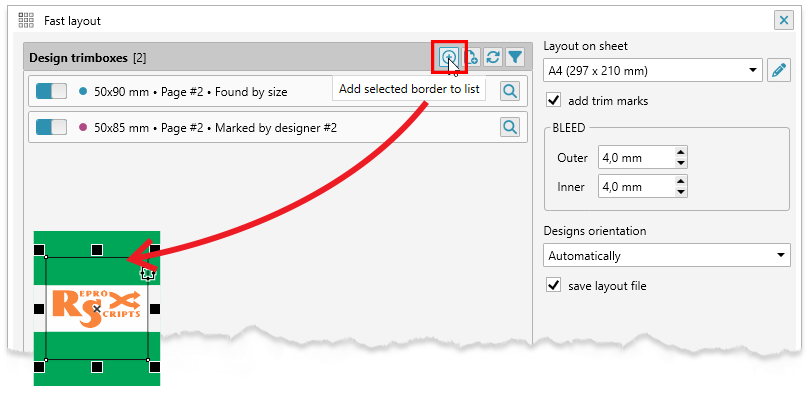
Adding pages
If you set the page dimensions equal to the trim size when developing the design, then for quick layout you can add one or all pages of the document to the list entirely. In this case, the plug-in will perform the layout, add bleed and trim marks along the borders of the specified pages.

Bleed and trim marks
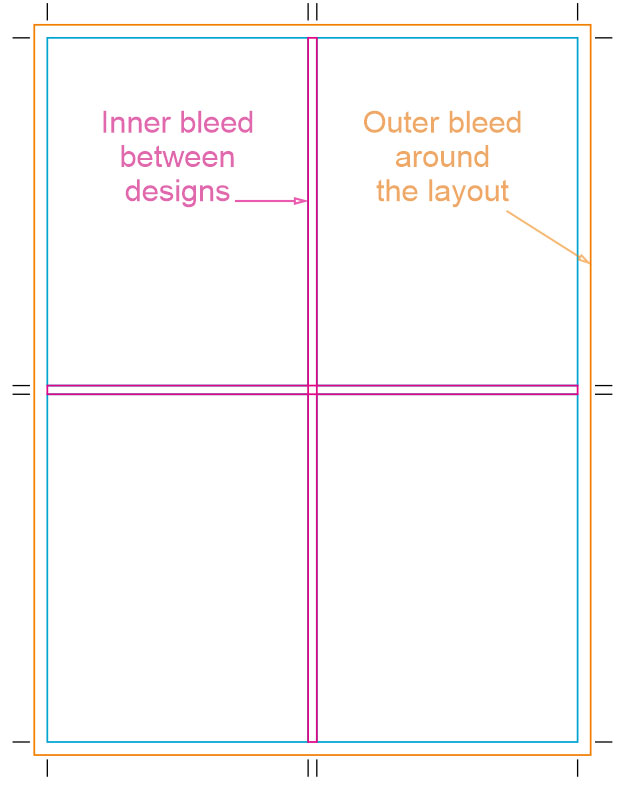
If the checkbox add trim marks is on, the trim marks will be placed around the imposed jobs. The dimensions of the marks are set in the plugin's settings (the button with the gear in the lower left corner of the form). Since the parameters of the bleed can often vary from job to job, its value is set directly in the main window of the plugin.
The bleed is indicated for the entire layout at once — the internal distance between the laid out works and the external allowance along the boundaries of the entire layout.
Designs orientation
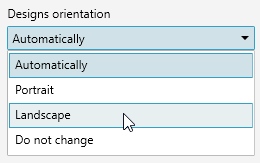
Most often, it is necessary to perform layout on a sheet trying to fill it as much as possible, for this, the plugin calculates the optimal orientation of the work, depending on the proportions of the paper. However, in some cases it may be necessary to perform the layout in a certain orientation - horizontally or vertically. To do this, you can select the desired value in the interface and fix the desired orientation.
Imposing
When the list contains active jobs and the size of the output sheet is specified, then you can perform the imposition by clicking on the button. If the file from which the job is taken has already been saved, then the checkbox save the layout file will be enabled. The layout will be saved in the same folder where the source document is located.
